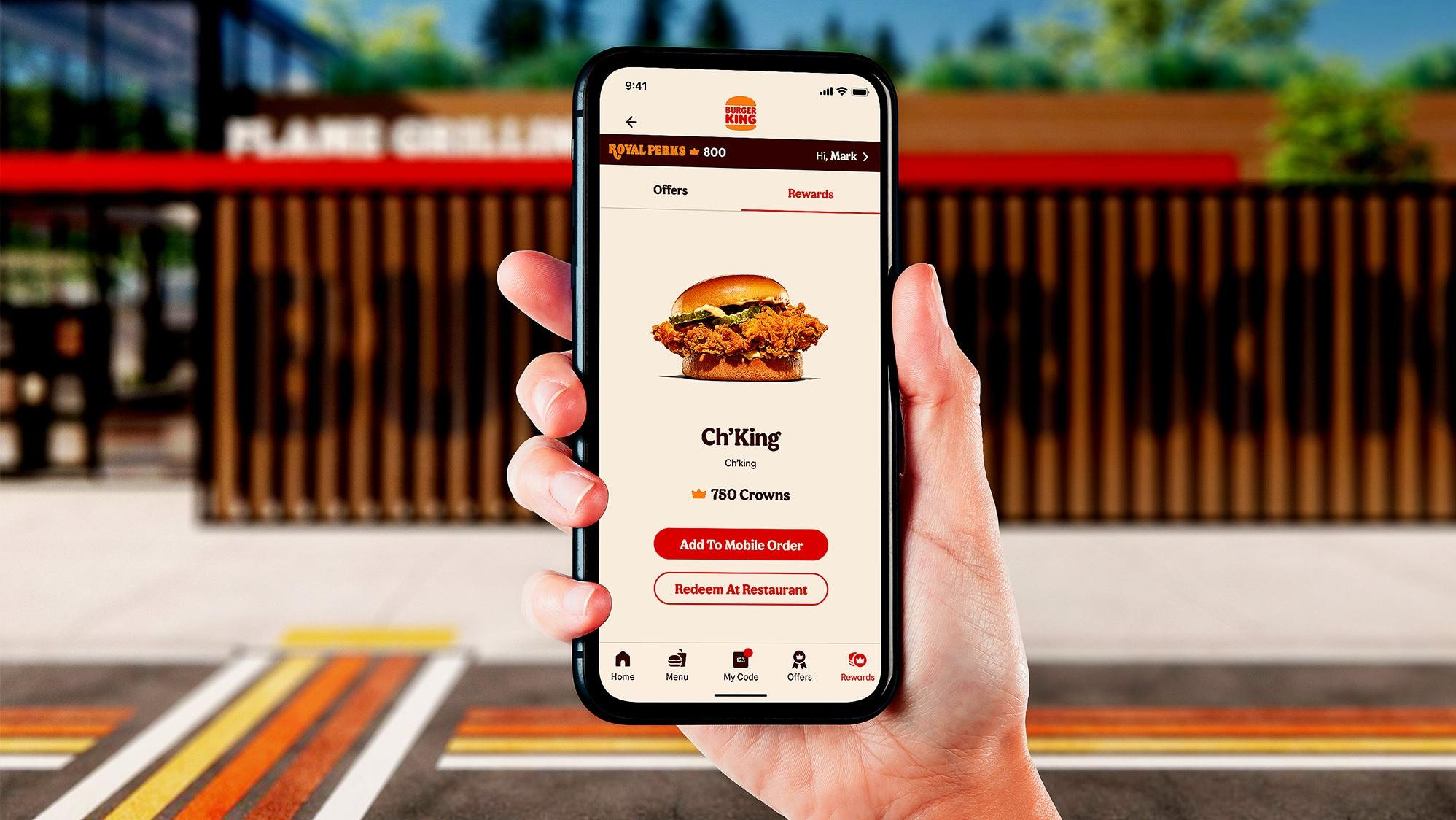McDonald's, Starbucks, And More Are Begging You To Sign Up
And they're not just offering rewards out of the kindness of their hearts.
Is it really a "loyalty" program if you sign up for rewards membership offered by every single chain restaurant? Although the term "loyalty" might be interpreted a bit loosely on the customer side, it's clear that fast food chains everywhere are placing more emphasis on their membership programs lately. Chains like Chipotle, Dunkin', and Starbucks have all updated their rewards, and P.F. Chang's is adding a paid subscription tier to its existing program.
With inflation looming over every purchase we make, signing up for a program that rewards your purchases with eventual freebies seems like a good trade-off. But since most of these programs are free to join, what are fast food businesses getting out of their loyalty programs? Why do they care how many people sign up? Turns out, there are a lot of reasons restaurants are investing so heavily in member perks.
Loyalty programs encourage return visits
Before the rise of fast food mobile apps, there were good old fashioned punch cards. Think back to those little cards you'd keep in your wallet, their 10 or 12 little spaces just waiting to be marked after each purchase. The system was simple: rack up ten orders at a given establishment and you'd score a free treat on your eleventh visit. In the modern era, that same incentive structure is still in place—it's just gone digital.
Within the Starbucks app, for example, purchases earn customers "Stars," and a certain amount of Stars can be redeemed for certain freebies (coffee, pastries, etc.) But because the orders are now being tracked via mobile order technology, rewards can get a bit more complicated—say, by offering extra points for purchases made on consecutive days, or at certain times of day.
The 2022 Loyalty Report from Paytronix, a software company specializing in customer experience, found that restaurants and convenience stores that saw an uptick in visits between January 1, 2019 and December 31, 2021 could attribute 18-30% of those visits to loyalty members. When a customer stands to "earn" something by visiting a certain fast food joint, it's more likely they'll remember to head there regularly.
Ticket sizes increase when rewards points are involved
Loyalty programs not only encourage customers to visit more often, but to spend more money upon each visit, so as to earn the promised rewards. Business Insider reports that Dunkin' recently changed its Dunkin' Perks program to Dunkin' Rewards and appears to be aligning itself with Starbucks' longtime membership program. In the changes, we can see glimpses of how the chain hopes to increase the size of customers' purchases.
Previously, Dunkin Perks customers earned five points for every dollar spent, with a free drink costing 200 points, or $40 of spending. The new Dunkin' Rewards earns 10 points for every dollar, but the points are redeemed for smaller rewards; the bigger rewards cost more points than they did before. For example you can redeem 150 points ($15 in purchases) for an espresso shot, Munchkins, or hash browns, but it takes 500 points ($50 spent) to earn a free drink (again, it only cost $40 before).
Similarly, Chipotle also recently increased the amount of points it takes for loyalty customers to earn a free burrito. Chipotle loyalty members previously had to spend $140 to get to a free item. Now, it costs $162.50. The brand is clearly hoping that the allure of a "free" upcoming item is strong enough to get customers to spend an extra $22.50 to get there.
In fact, the report from Paytronix found that 55% of restaurants' loyal customers increased their check sizes by more than the restaurants' increased price on reward-redemption items. Customers now have to spend more money to earn "free" stuff, but they're spending even beyond that increased margin. And the more you spend, of course, the quicker you redeem your reward and wind up back at zero points.
Loyalty programs provide companies with our personal data
Signing up for a fast food rewards program might not cost you any money, but it brings to mind the old internet adage: If you're not paying for a product, then you are the product. In this case, companies are profiting directly off of amassing our personal information. Even information as basic as your name and email address allow fast food restaurants to blast your inbox with marketing emails, and perhaps even profit off of selling that info to other companies who plan on doing the same thing.
When you order through a loyalty app, you're also providing these businesses with insights on which items you like, what you order most frequently, the time of day you're most likely to spend money, the average size of your order, the type of marketing you respond to—all of it, combined with whatever demographic data you provided as you signed up for the program, is crucial market research for fast food brands.
And when these brands try to be "hip, cool, and trendy," your data is what they're using to inform those choices. They see exactly who their most engaged customers are, and they want to appeal to those consumers directly. The 2022 Loyalty Report from Paytronix found that loyalty programs are becoming more popular with younger Gen Z customers while fewer older customers are signing up. This is reflected in the big, splashy ads we see for their products.
Whether you sign up to receive perks from any of these chains is up to you, but just understand that it's not as simple as signing up for a free side of fries. You're paying for those fries, all right, just in ways you can't always see.
